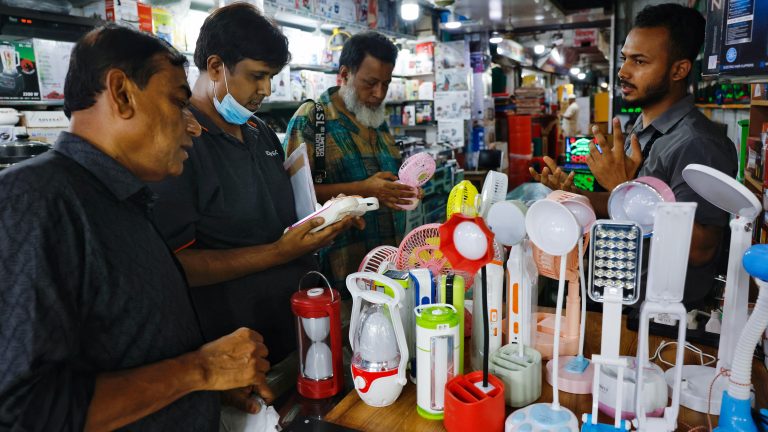Khan works in Bangladesh’s business process outsourcing (BPO) sector. She is one of around 70,000 workers in an industry to which companies around the world outsource entire business functions — from marketing and payroll to human resources. The BPO industry in Bangladesh has been expanding, with jobs in the sector growing steadily in recent years, according to the Bangladesh Association of Contact Center and Outsourcing. According to local media reports, there were at least 350 BPO firms in the country as of March 2023, with an annual revenue of $700 million in 2022. They support real estate companies, health-care facilities, and law firms in the U.K. and U.S. But the foot soldiers of this industry — BPO workers — are now staring at a disconcerting future as global temperatures continue to rise. Several told Rest of World they’re already weary and exhausted.
Five hours from Dhaka, in Chattogram, known for its balmy summers with frequent spells of rain, 27-year-old BPO worker Naima Shirmen said the heat has felt like “living hell” this year. “I’ve never seen heat as bad as this in my whole life. I get headaches everyday. I feel sick. I’m not able to sleep at night properly,” she told Rest of World. “And as you know, if you can’t sleep properly, you can’t do work.” Shirmen provides remote marketing support for foreign clients of BPOs in Dhaka.
“The [heat] is so bad this year that when we switch on the fans, it makes no difference,” she said. “It’s like there’s no air in the room. It’s like the fan isn’t working at all.”
According to Shouro Dasgupta, environmental economist at the Euro-Mediterranean Center on Climate Change, heat stress and high heat exposure is already affecting labor supply and productivity across countries like Bangladesh, India, and others in South and Southeast Asia — regions where labor is projected to suffer due to future climate change. Sustainable cooling is the need of the hour, particularly for indoor tech workers, Dasgupta told Rest of World. He believes that governments should step in and work with air-conditioner manufacturers, building operators, and other stakeholders to ensure workers are comfortable.
“I wonder what the temperatures will be like 100 years from now,” says me from inside an air-conditioned building in Phoenix.
Yikes! Stay cool in there! If you haven’t read the start of “Ministry for the future”, it’s worth a look https://www.orbitbooks.net/orbit-excerpts/the-ministry-for-the-future/ It’s a little frightening, to be honest.
I just read your link. Sounds so hauntingly current. These lines in particular really stuck out: “It was indeed as warm as a bath, or almost. He kept his arm in, trying to decide if the water was cooler or hotter than his body. In the cooking air it was hard to tell. After a time, he concluded the water at the surface was approximately the same temperature as his blood. Which meant it was considerably cooler than the air.”
…I keep reading the news about water in Florida being 100F: https://www.cbsnews.com/news/florida-ocean-temperatures-rise-to-the-90s-nearly-hitting-100/
wow…
Meteorologists told CBS Miami that the temperatures seen in Florida’s coastal waters are “incredible.”
“The water is so warm you really can’t cool off,” National Weather Service meteorologist Andrew Orrison told CBS Miami, saying the temperatures seen in the Gulf and Southwest Atlantic are 4 to 5 degrees warmer than normal.
it’s getting hotter faster than expected. inaction/denial isn’t likely to be a viable option for much longer.



